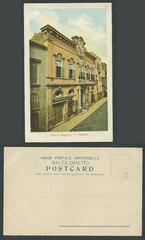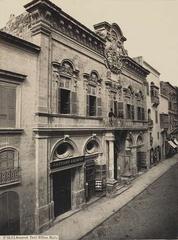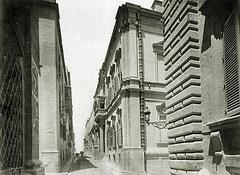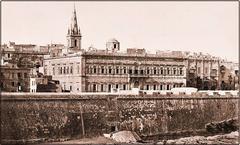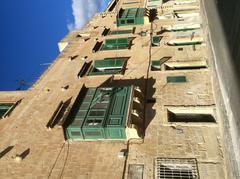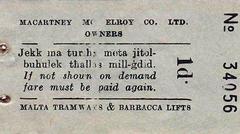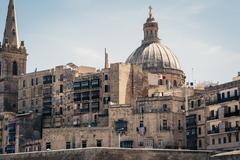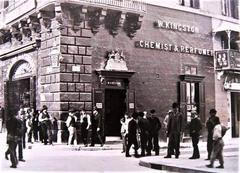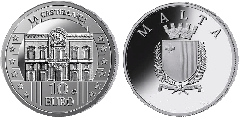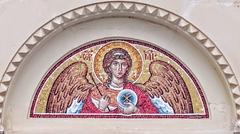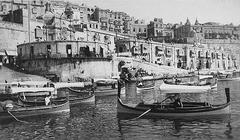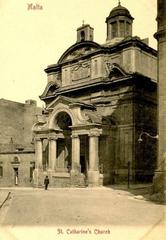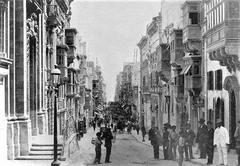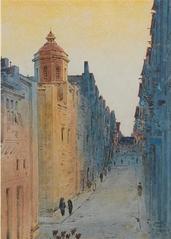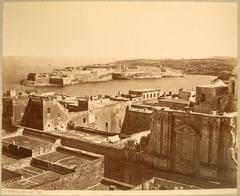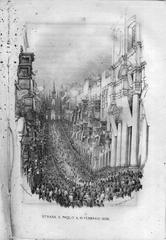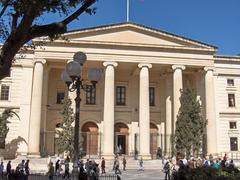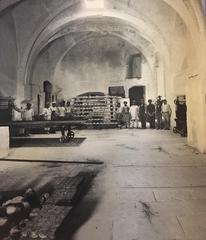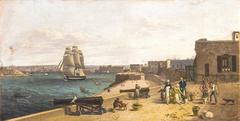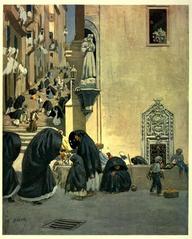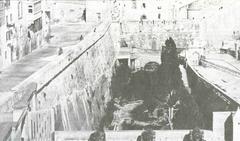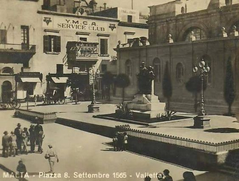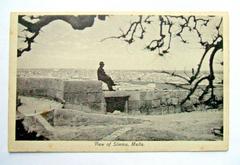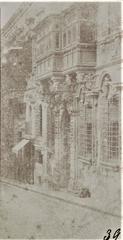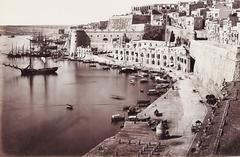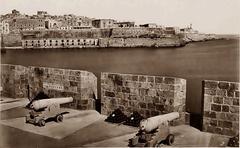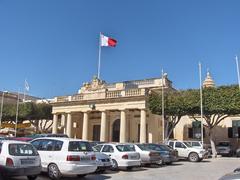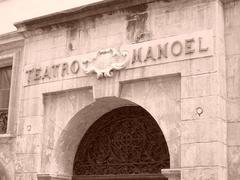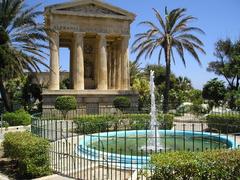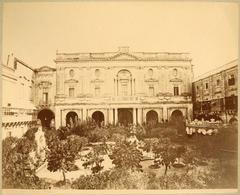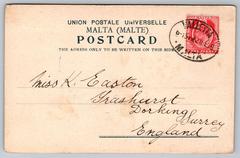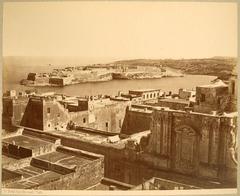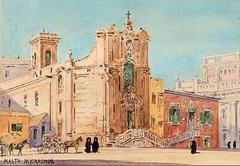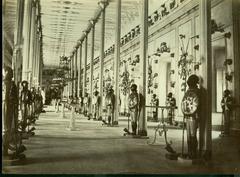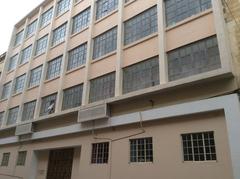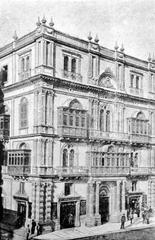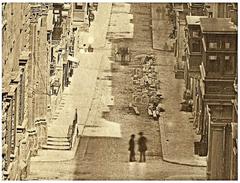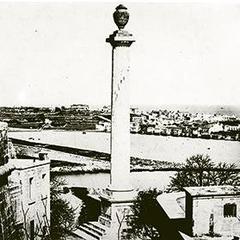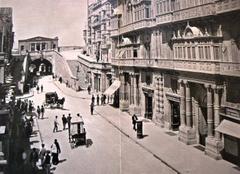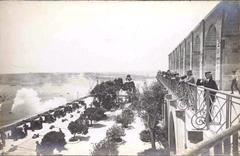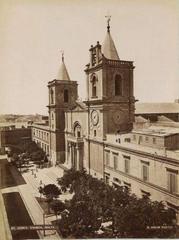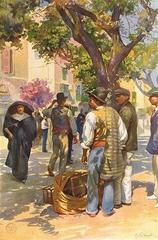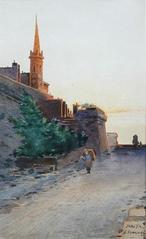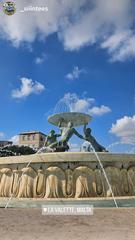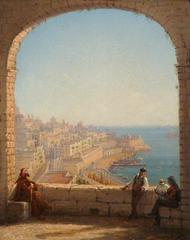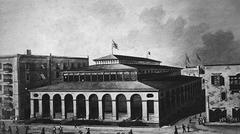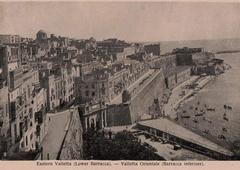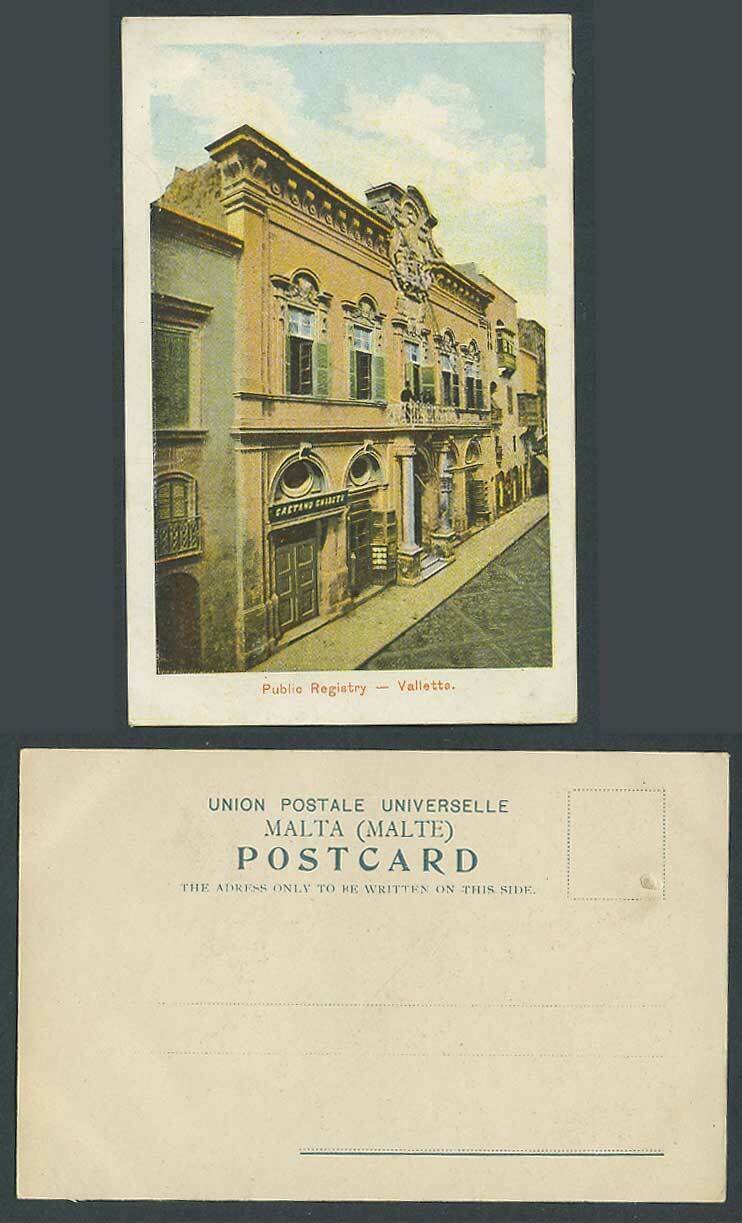
Banca Giuratale Valletta: Visiting Hours, Tickets, and Historical Significance
Date: 14/06/2025
Introduction
Situated prominently on Merchants Street in the heart of Valletta, the Banca Giuratale—also known as Palazzo Zondadari—is a remarkable example of Maltese Baroque civic architecture. This imposing building is not only an emblem of Valletta’s rich administrative legacy but also a witness to Malta’s most pivotal historical events. From its 18th-century origins as the seat of Valletta’s Università (city council) to its current role housing the Ministry for the Economy, Enterprise and Strategic Projects, the Banca Giuratale is woven into the fabric of Malta’s civic life (Order of Malta Western; DBpedia).
This guide details the Banca Giuratale’s history, architectural highlights, visiting hours, ticketing policies, accessibility, nearby attractions, and practical travel tips—making it an essential resource for anyone seeking to explore Valletta’s Baroque heritage.
Table of Contents
- Discover the Banca Giuratale: Valletta’s Baroque Civic Jewel
- Origins and Construction
- Architectural Significance
- Role in Maltese History
- Visiting the Banca Giuratale
- Nearby Attractions
- Heritage Status and Preservation
- Visitor Experience and Tips
- Frequently Asked Questions (FAQ)
- Summary and Recommendations
- References
Discover the Banca Giuratale: Valletta’s Baroque Civic Jewel
The Banca Giuratale stands as a testament to Valletta’s sophisticated urban planning and civic pride. Its stately Baroque façade, grand entrance, and prominent position on Merchants Street reflect its historic role as the nerve center of the city’s administration. Today, while interior access is generally reserved for government business or special cultural events, the building’s exterior remains a must-see for visitors tracing Valletta’s architectural and political evolution.
Origins and Construction
Commissioned between 1720 and 1722 by Grand Master Marc’Antonio Zondadari, the Banca Giuratale was conceived as the new headquarters for Valletta’s Università, the administrative council responsible for municipal governance, finance, and justice. Italian architect Romano Carapecchia designed the building, replacing older tenements previously used for civic purposes (Order of Malta Western). Its creation signaled both the city’s growing administrative sophistication and the Baroque era’s influence on Maltese civic life.
Architectural Significance
Exterior Features
The Banca Giuratale’s façade is a harmonious blend of Baroque authority and Maltese restraint. Key features include:
- Doric Columns: Flanking the main entrance, these columns support an open balcony, a hallmark of Baroque civic buildings.
- Ornate Windows & Arcades: Tall arched windows and two arcades frame the entry, with oval windows set in blind arches above.
- Central Ornamentation: A bust of Grand Master Zondadari crowns the central axis, surrounded by carved figures and drapery.
- Coats of Arms: Once adorned with multiple coats of arms, these were replaced during the British period after being defaced in the French occupation.
The warm, honeyed limestone façade, restored in 2014, is emblematic of Valletta’s architectural vernacular (Wikipedia).
Interior Layout
Although public access is limited, available descriptions highlight:
- Grand Halls: Former council chambers with high ceilings and robust limestone walls.
- Decorative Detailing: Plasterwork, painted ceilings, and carved stone cornices underscore the building’s status.
Role in Maltese History
Administrative Center
For nearly a century, the Banca Giuratale was the seat of Valletta’s Università, where elected jurats managed the city’s finances, public works, and legal affairs. Its central location made it the focal point for civic engagement and public proclamation (DBpedia).
Key Historical Events
- French Invasion (1798): The building hosted crucial civic meetings as French occupation loomed. Napoleon is reputed to have spent his last night in Malta here before departing for Egypt (Times of Malta).
- National Assembly: During the French occupation, it served as the meeting place for the Maltese National Assembly, pivotal in the island’s resistance and transition to British rule (MaltaInfoGuide).
Later Functions
After the Università’s dissolution in 1818, the Banca Giuratale adapted to new civic roles, including use as the General Post Office, Public Registry, and police station. Today, it houses the Ministry for the Economy, Enterprise and Strategic Projects (Wikipedia).
Visiting the Banca Giuratale
Opening Hours & Tickets
- General Access: The Banca Giuratale operates as a government office and is not open for regular public tours.
- Special Events: Public access is occasionally granted during cultural events such as Notte Bianca and Heritage Open Days. Admission is usually free during these times.
- Guided Tours: Several local operators offer walking tours that discuss the Banca Giuratale’s exterior and history; check with Visit Malta or authorized guides for up-to-date offerings.
Location & Accessibility
- Address: Merchants Street, Valletta, Malta
- Access: The building is in a pedestrian-friendly area, accessible by foot from the Valletta bus terminal (approx. 10-minute walk).
- Wheelchair Access: The exterior is accessible; interior access may be limited during special events—always confirm details in advance.
Travel Tips
- Visit during open days for a chance to see inside.
- Early mornings and late afternoons offer the best light for photography.
- Combine your visit with a stroll through Republic Street and nearby landmarks.
Nearby Attractions
The Banca Giuratale is ideally located for exploring Valletta’s historic core. Notable nearby sites include:
- St. John’s Co-Cathedral
- Grandmaster’s Palace
- Upper Barrakka Gardens
- National Museum of Archaeology
These attractions showcase the breadth of Valletta’s Baroque and civic heritage.
Heritage Status and Preservation
The Banca Giuratale is listed as a Grade 1 national monument and appears on the National Inventory of the Cultural Property of the Maltese Islands. The restoration of its façade in 2014 demonstrates ongoing efforts to preserve its architectural and historical significance (Wikipedia).
Visitor Experience and Tips
- Exterior Viewing: The façade can be admired from Merchants Street at any time.
- Event Participation: Monitor local cultural calendars for open days and guided tours.
- Amenities: Cafés, shops, and public restrooms are available nearby.
- Etiquette: As an active government building, respectful behavior and attire are expected.
Frequently Asked Questions (FAQ)
Q: Can I visit the interior of the Banca Giuratale?
A: Interior access is limited to special events or guided tours. Check official event listings for opportunities.
Q: Are tickets required?
A: There are no regular ticket sales. Access during open days is generally free.
Q: Is the building accessible for visitors with disabilities?
A: The exterior is accessible, but interior access may be limited. Contact the Ministry or tourism office for details.
Q: What is the best time to visit?
A: During cultural events or open days, ideally in spring or autumn for mild weather and fewer crowds.
Q: Are guided tours available?
A: Some local tour operators include the Banca Giuratale on walking tours—check with Visit Malta for current information.
Summary and Recommendations
The Banca Giuratale is a living symbol of Valletta’s civic pride and architectural achievement. Although its interior is generally reserved for government use, the building’s striking Baroque façade and central location make it a highlight of any visit to Valletta. Special events and guided tours provide rare but valuable opportunities to explore its interior and delve deeper into its history.
Visitor Tips:
- Combine your visit with other nearby landmarks for a fuller experience.
- Check official tourism channels for open days and event schedules.
- Use the Audiala app for audio-guided tours and up-to-date cultural information.
References
- Order of Malta Western
- DBpedia
- Times of Malta
- Wikipedia
- Visit Malta
- Heritage Malta
- Grumpy Camel Malta Insider Tips
- MaltaInfoGuide
Enjoy your exploration of Valletta’s Banca Giuratale—where history, architecture, and civic life converge. Download the Audiala app for guided tours and follow official channels for updates on events and visiting opportunities.
